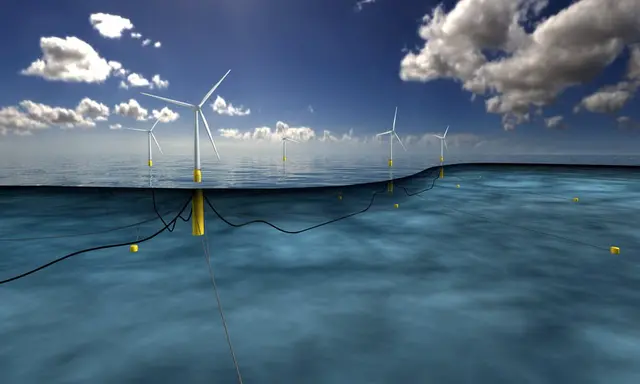The world’s largest floating windfarm is set to be built off the coast ofScotlandafter its developers were granted a seabed lease on Monday.
Statoil, the Norwegian energy company, expects to have five 6MW turbines bobbing in the North Sea and generating electricity by the end of 2017. The company has already operated a single turbine off Norway.
TheHywindturbine is one of the frontrunners in aglobal race to develop flotillas of floating wind turbinesthat can conquer the deep oceans and reap the strongest winds on the planet. Existing offshore wind turbines, standing on concrete and steel foundations driven into the ocean floor, flounder on heavy costs when depths are greater than about 40 metres.
More than 40 projects around the world are in various stages of development. Most are inspired by rugged oil and gas rigs that have weathered storms for decades. Offshore windfarms also largely avoid the difficulties caused by the visual impact of windfarms on land.
The Hywind windfarm will float 15 miles off Scotland’s east coast by Peterhead. The base of each turbine is a floating steel tube containing ballast, which is tethered to the sea bed. The Crown Estate, which manages the seabed, granted the lease on Monday.
“We are very pleased to develop this project in Scotland, in a region with a huge wind resource and an experienced supply chain from oil and gas,” said Leif Delp, project director for the Hywind Scotland project. “Through the hard work of industry and supportive government policies, the UK and Scotland is taking a position at the forefront of developing offshore wind as a competitive new energy source.”
More than90% of the world’s offshore wind capacityis installed in northern Europe, with the UK having the biggest share. ButGermany’s offshore wind is growing more quicklythan in the UK and development is ramping up inJapan, China and theUS. Offshore wind makes up just 3% of all wind power, with most wind turbines being sited on land, but is seen as promising in countries like the UK where getting planning permission for new onshore farms is difficult.
“Floating offshore wind is an exciting technology with huge, global potential, and it’s great to have this world first in Scottish waters,” said Lindsay Roberts, at Scottish Renewables.
Ronnie Quinn, general manager of the Crown Estate’s Scotland portfolio, said: “We’ve been able to support the development of emerging technologies, from floating wind to tidal current energy, placing Scotland in a very strong position to secure global investment in low carbon energy.”
(THE GUARDIAN)
 简体中文
简体中文

